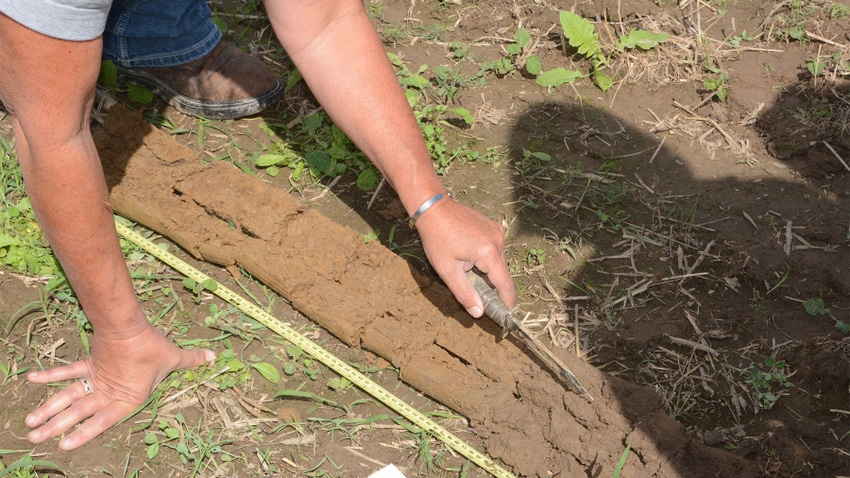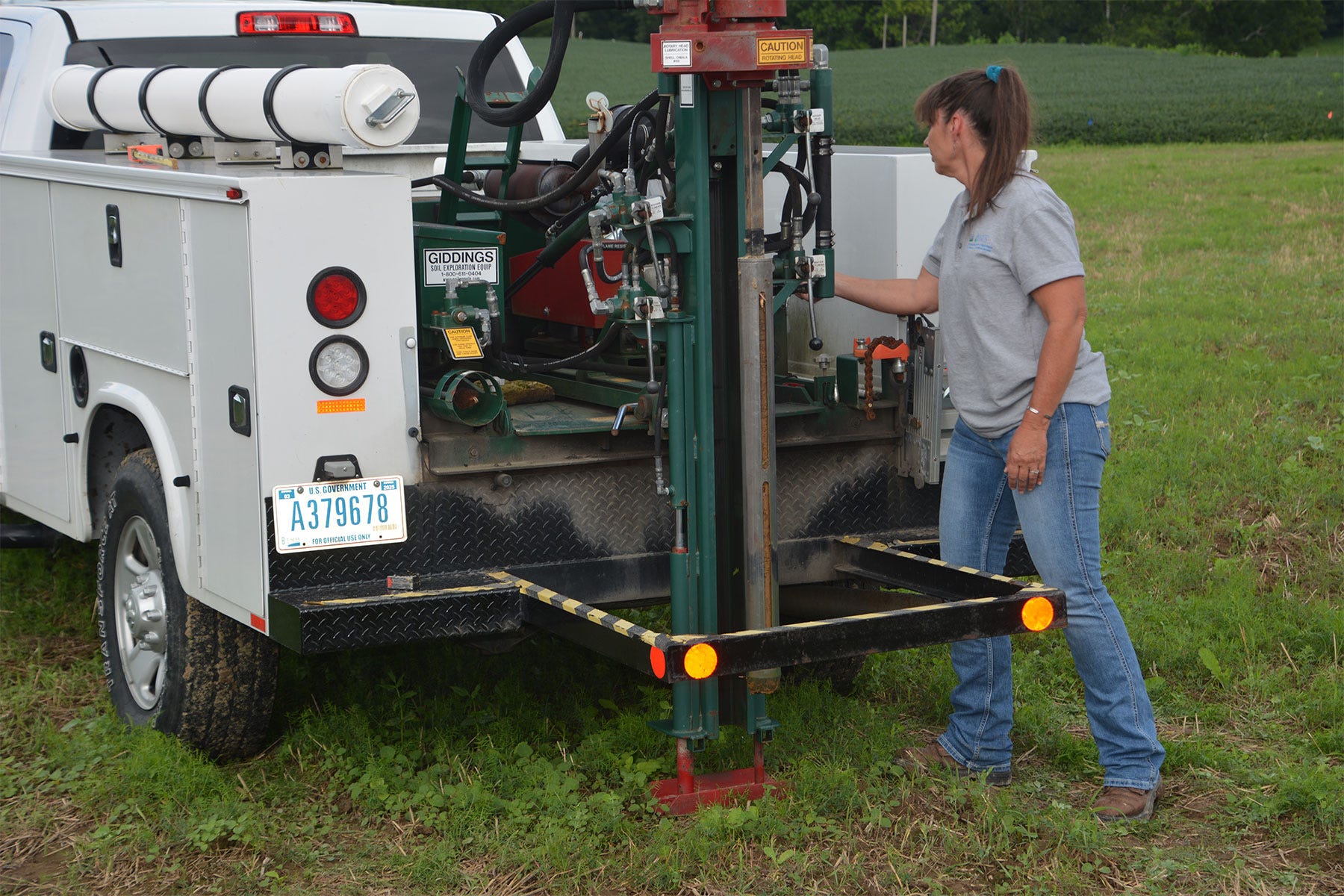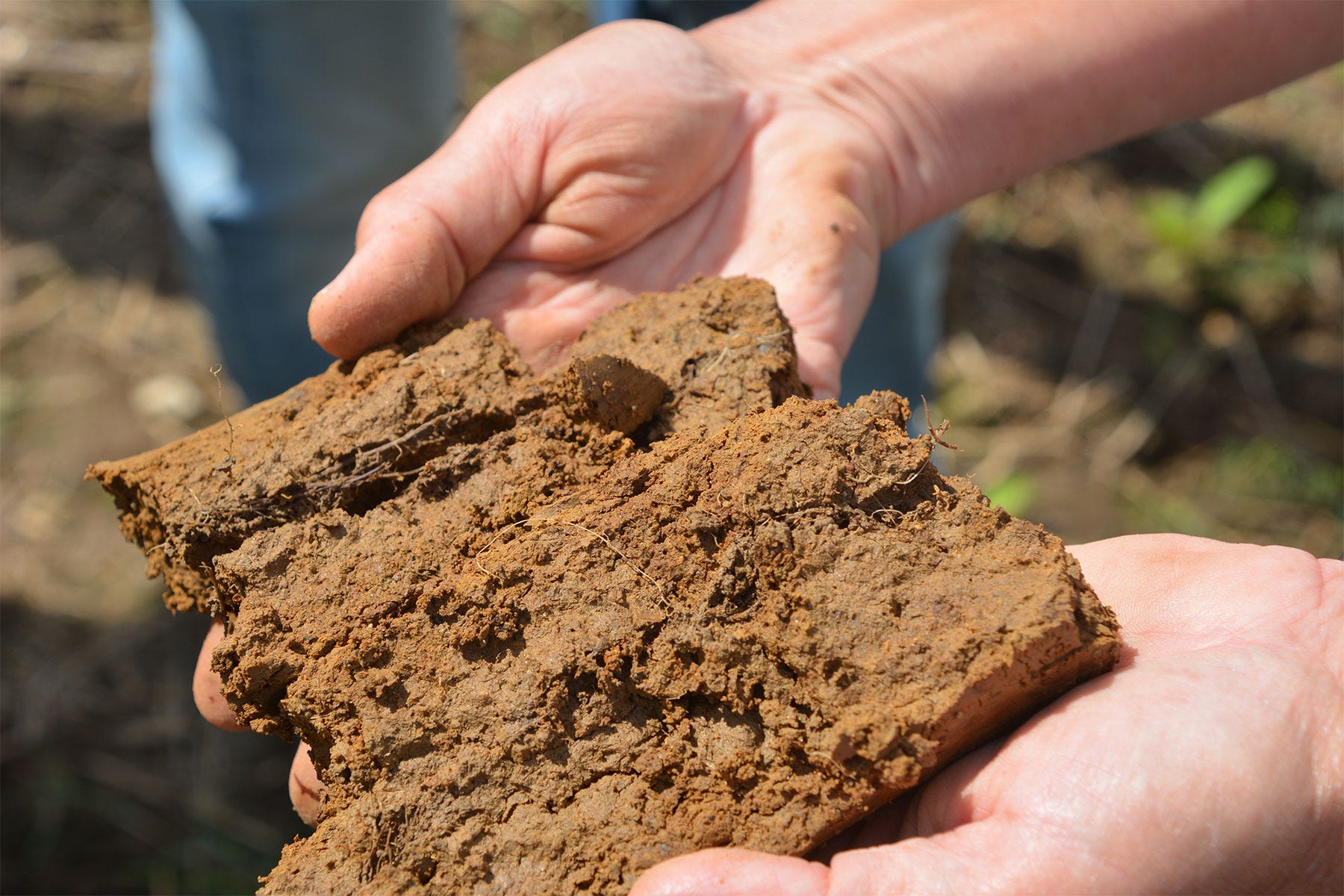
Are you concerned cover crops aren’t very tall yet? Perhaps you think you won’t get the benefits many people promote, such as soil loosening and nutrient recycling. Surely you need bigger plants to get the deep-rooting action that cover crops are known for around the Midwest.
Roger Wenning, Greensburg, Ind., says, “Hold on — wait a minute.” He is convinced that even month-old cover crop plants can root deep.
How deep? He asked Dena Anderson, soil scientist with the Natural Resources Conservation Service, to bring her probe truck along when she came to his field day in August. She pulled the truck into the middle of his cover crop plot and went to work. Soon, she was laying out a 4-foot-deep core and slicing it open to see what was inside.

DIGGING FOR ROOTS: Dena Anderson prepares to lower her hydraulic probe into the soil, in search of cover crop roots. Anderson discovered that even with young plants, roots run deep.
Root power
There were two notable things inside, Anderson notes. First, there were plant roots, even at 4 feet deep. In fact, she added an extension on the probe and found roots at 5 feet. Roots were coming from small, young cover crop plants of various types that Wenning seeded in mid-July, just for the field day.
It’s not unusual to find cover crop roots that deep, Anderson says, even in relatively young plantings. She has found cover crop roots at similar depths using her probe truck at other locations.
Hans Kok, a soil conservation consultant, says roots at deep depths weren’t the only find from probing. He discovered a slice of soil from the tube well below the surface that contained obvious earthworm holes.
“When you can find evidence of worm activity that deep, you know that you have belowground livestock helping improve soil health,” he says.

DEEP POWER: This section of the soil core came from about 4 feet below the surface. Note the roots growing at this depth inside the soil profile.
The field where Wenning seeded a variety of cover crops for demonstration purposes has not been plowed in a long time, he notes. Today, Wenning and his son, Nick, are avid no-tillers, planting green into standing cover in some fields.
The root demonstration was just another reason why Wenning does not worry if cover crop plants start out small — especially if it is cereal rye, a crop he knows can survive the winter and flourish the next spring, even if planted late.
“There are going to be deep roots, and we are after that rooting action,” he says.
About the Author(s)
You May Also Like




